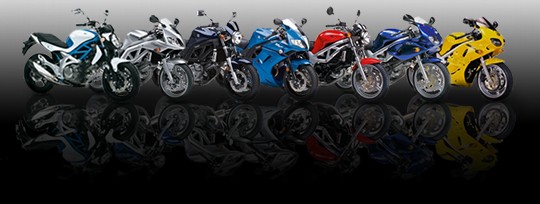 |
 |
|
|
#691 | |
|
Guest
Posts: n/a
|
Quote:
|
|

|
|
|
#692 |
|
Member
Mega Poster
Join Date: Mar 2005
Location: Llanwrtyd Wells Powys
Posts: 1,146
|
No I'm referring to the definition of BHP, or at least one of them, and referring further back to my comment that if BHP, by definition, is measured at the crank, then a dyno run at the wheel will have had some voodoo applied to get the quoted figure.
|
|
|

|
|
|
#693 | |
|
Noisy Git
Mega Poster
Join Date: Apr 2007
Location: Halifax/Leeds
Posts: 26,645
|
Quote:
J1349 tell you about net power, but even that says you need reference inlet air, reference fuel... It does mention as far as I can see, chassis dyno. I presume it means an engine dyno TBH.
__________________
Currently Ex Biker
Now rebuilding a 63' fishing trawler as a dive boat |
|
|
|

|
|
|
#694 | |
|
Guest
Posts: n/a
|
Quote:
 I had a mk1 8v with similar mods plus enlarged throttle bodies. More or less same power. Loved that car. weighed nothing and went like stink 
|
|

|
|
|
#695 |
|
Guest
Posts: n/a
|
|

|
|
|
#696 |
|
Guest
Posts: n/a
|
|

|
|
|
#697 |
|
Member
Mega Poster
Join Date: Jul 2003
Location: Warwickshire
Posts: 2,804
|
"Brake" power simply means the power as determined by applying a brake to a shaft transmitting torque at a given rotational speed. Where in the system you take your measurements is up to you. Different test procedures (or Directives etc) will specify what and where and how, and also what the answer can be used for.
As a general aside, there is a fundamental difference between a measurement using an absorbtion dynamometer and measurement taken from an inertia dynamometer. Absorbtion applies a braking torque to the dyno shaft, usually by electrical means (eddy current etc) or in old fashioned devices a water impeller system, and the braking torque is measured directly by load cells on torque arms (or old fashioned ones used weights and spring balances). The speed is measured, and the product of speed and torque gives power (with appropriate constants). The energy is absorbed by the braking system (usually ending up as heat in cooling water one way or another). These facilities are invariably expensive and complex. A modern test cell wil cost seven figures. An inertia dynamometer is an indirect measure of power. It uses the principle that a torque applied to a rotating shaft which possesses inertia will produce an angular acceleration proportional to the torque divided by the inertia. On inertia dynos only the speed is measured during a test, the acceleration (rate of change of speed) is then calculated from the speed history, and the torque producing that acceleration is deduced by applying the inertia of the dyno system. This method is inherently prone to inaccuracy since it assumes the true inertia is known accurately and precisely, everything else depends on this. It also requires rate of change of speed to be calculated, which by definition can only be done by calculating differences at different speeds, therefore the resultant can only ever be an averaged value over a specific speed range. Results will have different "inaccuracy" depending on the relative inertias of the machine being tested and the inertia dynamometer itself. The big advantage is that a "useful" device can be produced at relatively low cost and does not need big energy absorbtion capability (cooling towers etc). The limitations must however be appreciated and the facility should only be used for limited purposes. To achieve accurate reliable repeatable rmeasurements, the test needs to be done on a steady state absorbtion facility, the engine needs to be held at steady state for typically 30sec minimum to stabilise, and temperatures and pressures etc must be stable. An engine producing 25kW steady state will produce significantly more under transient conditions since temperatures will not have reached their stable values, that is a principle well known and understood by anyone experienced in engine development testing, and that is why a Type Approval test, or a Conformity of Production test, one carrying legal implications for a manufacturer, will be done on a steady state absorbtion facility and why a transient inertia type facility will not produce comparable (i.e. able to be compared) results.
__________________
"Artificial Intelligence is no match for natural stupidity" |
|
|

|
|
|
#698 |
|
Guest
Posts: n/a
|
Flameboy- glad you got the money back. Good news and progress.
Good luck with the rest! |

|
|
|
#699 |
|
Guest
Posts: n/a
|
|

|
|
|
#700 | |
|
Member
Mega Poster
Join Date: Jul 2003
Location: W Mids
Posts: 2,037
|
Quote:
Druid [1] also running red lights, speeding etc, although there better be a good reason for the magistrates to accept it.
__________________
'00 SV700S - '94 RVF400R - '97 RVF400R - '88 VFR750F |
|
|
|

|
 |
|
|
 Similar Threads
Similar Threads
|
||||
| Thread | Thread Starter | Forum | Replies | Last Post |
| eye ball yellow "n" and a blue "s" curvey!!! | cymroboi | The Border Patrol | 5 | 19-06-09 08:09 PM |
| Using "Pointy" Tensioners in a "Curvy"? | dtr125 | SV Talk, Tuning & Tweaking | 25 | 05-02-09 05:42 PM |
| teh "what you doing this weekend thread"...sponsored by Chesley "Sully" Sullenberger the Third | keithd | Idle Banter | 30 | 18-01-09 11:47 AM |
| that childish "but i dont want to go feeling" | 454697819 | Idle Banter | 11 | 06-01-08 10:07 PM |
| Rideout "Sections" or "Groups" | independentphoto | Bikes - Talk & Issues | 19 | 04-09-07 01:08 PM |